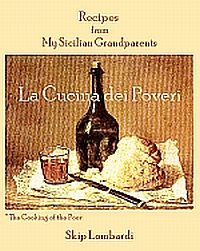Trick or Treat?
October 19th, 2007Ordinarily, I enjoy starting my day with the online edition of The New York Times. Oh sure, I’m as upset as anyone else reading about wars, stock market gyrations, and the fate of the Yankees’ Joe Torre, but once in a while, a story causes me to scratch my head and wonder, “How did it get this far?” Today’s Times features just such an article.
Jessica Seinfeld—wife of comedian Jerry, and apparently an otherwise upright citizen—has written a cookbook, “Deceptively Delicious,” published October 5, 2007, by Collins (an imprint of Harper Collins). It’s a manual of culinary subversion that tells parents how to flim-flam their children into eating things like spinach cooked into brownies. On the surface, this seems a worthwhile endeavor, although I’m old enough and reactionary enough to believe that if children are fed well from the start—with a moderate, well-balanced diet—one can achieve the same results without subversion. But that’s not the issue here.
One Missy Chase Lapine—former publisher of Eating Well magazine—wrote a cookbook called “The Sneaky Chef,” published April 4, 2007 by Running Press. Ms. Lapine’s cookbook is also aimed at flim-flamming children into eating spinach cooked into brownies. Her cookbook predates Ms. Seinfeld’s by no less than four months. Prior to publication by Running Press, Ms. Lapine had submitted a 149-page proposal, including 42 recipes, to Harper Collins—twice. Each submission was rejected.
In their attention to this story, The Times article used the word ‘coincidence’ twice. Columnists Rush and Molloy, writing in today’s New York Daily News, use a stronger word.
But when I read stories like this, I can’t help thinking about, say, bankers with MBAs offering sub-prime mortgages to people who wouldn’t qualify for membership at their local video rental stores. Again, my point is, how did it get this far?
The Times‘ Motoko Rich writes,
Did no one at Collins see that another cookbook, very similar to Ms. Seinfeld’s, that they had already rejected, had just been published? How did it get that far?
Mr. Rich also writes that Collins and Running Press had communicated about Ms. Seinfeld’s book in advance of its publication:
Awkward? Does anyone else remember Rosemary Woods and the eighteen-minute gap in the White House tapes?
Hmmmm….I don’t know. But if I’d been an editor at Collins, I would have asked Running Press for an examination copy of Ms. Lapine’s book. And if they’d declined my request, I would have sent an intern down to the nearest Barnes & Noble with a few bucks from petty cash.
Nonetheless, as publisher Steve Ross noted for Rush and Molloy, “Collins U.S. has six printing presses going full time to keep up with demand.” The New York Times has announced that a week from Sunday, Ms. Seinfeld’s cookbook is expected to be number one on “the hardcover Advice, How-To and Miscellaneous” best-seller list.
And in the weeks to come, I suspect PR firms with expertise in risk mitigation and damage control will be consulted. Perhaps Ms. Seinfeld will graciously offer to turn over the proceeds of her book to Baby Buggy, the children’s charity she founded. It’s a good bet that gleeful hand-rubbing and chop-licking have already begun at New York law firms specializing in intellectual property litigation.
It’s all about due diligence. Whether you originate loans or cookbooks—bankers, editors, publishers, lend me your ears! How did it get this far?



